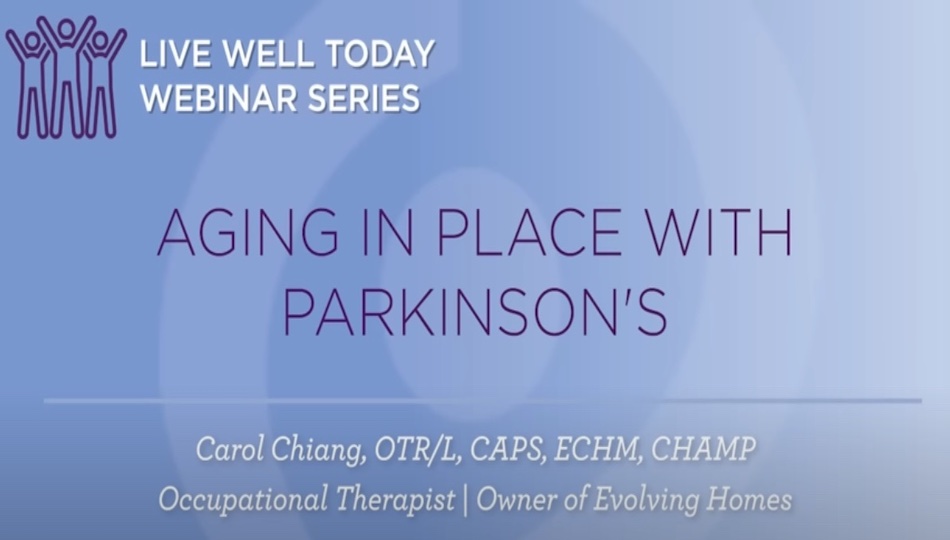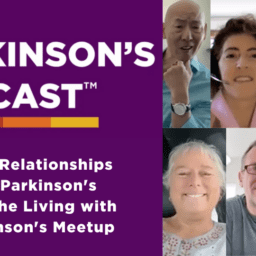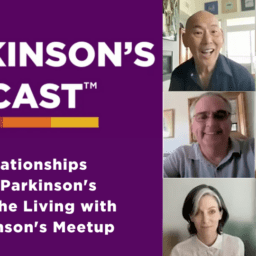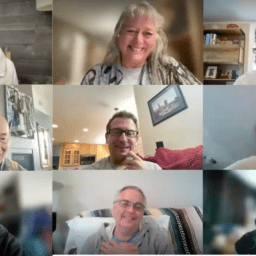In this interview, Carol Chiang discusses aging in place and how an occupational therapist (OT) can help with activities of daily living and how home adaptations can help you live well with Parkinson’s today and into the future.
You can download a copy of the transcript here.
This is not a flawless, word-for-word transcript, but it’s close.
Show notes
What Do an Occupational Therapists Do?
An occupational therapist (OT) helps people with activities of daily living, which include taking care of basic needs like getting dressed, bathing, and other aspects of hygiene, as well as the instrumental activities of daily living, which include cooking, cleaning, finance, and general management of the household. Occupational therapists help people excel in the "job of life."
An OT can help people live easier, better, and smarter. Some specific ways that an OT could help you include:
- Preventing falls and helping you recover from them if they occur
- Developing strategies for dressing, grooming, and hygiene
- Improving dexterity, flexibility, and strength to help you have the life you want
- Breaking complex activities into steps to facilitate continued engagement in what you like to do
What is Aging in Place?
Aging in place means living in your home for as long as possible as you grow older. It involves thoughtful consideration of your physical spaces and your practices of daily living to help you continue to live in your home and avoid hospitalizations and assisted living environments. An OT can help you devise strategies and skills to achieve this goal.
Home Assessments
An important component of aging in place is having a thorough home assessment. An OT can help with this process, and the process should involve considering what aspects of your house make it your home and how to incorporate these things into any adjustments to your home environment that may be suggested.
A home assessment is not intended to make changes against your will. Rather, the goal is to help you evaluate how you can adapt your spaces to help you achieve the lifestyle you want to have as long as possible.
The home assessment process can be a one-time event or a series of meetings, depending on your preferences and needs.
Considerations that a Home Assessment Might Involve
- Lighting--Under the bed lighting can help with frequent nightly trips to the bathroom. Motion sensors can also help. It is also important to have a clear and illuminated path to the bathroom or any other location you might move around at night, such as hallways and the kitchen. Inexpensive strip lights that can help with this are available from many sources, and home automation technology with voice activation for lighting can also be helpful.
- Contrasting Colors--Contrasting colors can help you manage vision changes. If your walls are a light color, consider a dark-colored grab bar and vice versa. Additionally, consider that peripheral vision and mobility in the neck can limit your ability to notice corners. Adding a contrasting color with a strip of tape or paint can help avoid collisions with corners or doorways.
- Bathroom Set-up--Some grab bars used in showers or other places are available with suction cups. These are less strong than models that can be bolted in, so suction-based models must be checked often to ensure they haven't come loose. Also, because people with Parkinson's sometimes make small motions or take smaller steps than they intended to take, raised areas at the edge of the shower are important. Contrasting colors can be helpful here. Another convenient addition to a shower is a chair to make cleaning your feet or shaving easier and help minimize the risk of dizziness when washing your hair.
- Night Clothes and Bedsheets--Some people with Parkinson's may have difficulty turning in bed or slipping off the bed. There are products designed to help with this that have variations in texture to help prevent slipping and generate some grip with minimal sacrifice of comfort.
- Handles and Switches--Lever-based door handles can be easier than rotating knobs. There are also automatic door openers and other digital home assistant integrations that can help with many aspects of safely and conveniently navigating your home.
- Furniture--Low seating can be challenging to get into and out of, and it can be important to add some color contrast if the furniture is the same color as the floor covering. Also, glass tables can also be hard to see.
- Floor coverings--Some tiles can be very slippery. There are tile floors that have extra texture to help reduce the chance of slipping. Some rugs, especially those with tassels, can get caught in a walker. Sometimes simply rotating a rug can help alleviate tripping hazards.
Additional Resources
Comfort Linen Site with Carol's Discount
Gear and Gadgets for Living Well with Parkinson's
About the Speaker
Carol Chiang 
Thank You to Our 2023 Live Well Today Webinar Series Presenting Sponsors
*While the generous support of our sponsors makes our educational programs available, their donations do not influence Davis Phinney Foundation content, perspective, or speaker selection.




















